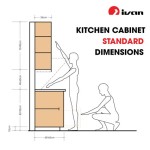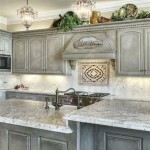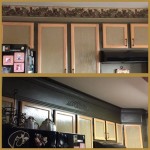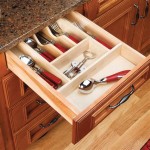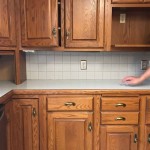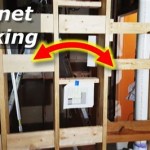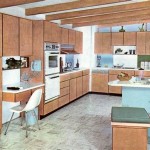How to Repair Kitchen Cabinet Doors with Particle Board Swelling
Kitchen cabinet doors, particularly those constructed with particle board cores, are vulnerable to swelling when exposed to moisture. This swelling, often occurring around sinks, dishwashers, or even from condensation, can compromise the structural integrity and aesthetic appeal of the cabinets. While complete replacement is an option, repairing the affected areas can be a cost-effective solution, restoring functionality and extending the lifespan of the cabinets. This article provides a detailed guide on how to repair kitchen cabinet doors suffering from particle board swelling, outlining the necessary tools, materials, and step-by-step instructions.
The success of a repair hinges on several factors, including the severity of the swelling, the location of the damage, and the type of finish applied to the cabinet door. In some cases, minor swelling may be addressed with simple techniques, while more extensive damage may necessitate more involved procedures. Before commencing any repair, a thorough assessment of the damage is crucial to determine the appropriate course of action. This includes identifying the source of the moisture, mitigating further exposure, and carefully evaluating the structural soundness of the affected area.
Assessing the Damage and Preparing the Area
The initial step involves a comprehensive assessment of the damage. Examine the affected cabinet door closely, noting the extent of the swelling, any signs of delamination (separation of layers), and the overall structural integrity of the particle board. This assessment will dictate the repair approach. If the swelling is minimal and the particle board remains relatively solid, a simple patching method may suffice. However, significant swelling or delamination requires removing the damaged material and rebuilding the affected area. Identifying the source of the moisture is paramount. Addressing leaks around the sink, dishwasher, or other appliances is essential to prevent recurrence of the problem. Without addressing the source, any repair will be temporary.
Once the damage has been assessed and the moisture source addressed, the area must be properly prepared for repair. This preparation involves cleaning the surface, removing any loose or crumbling material, and providing a stable base for the repair compound. Use a clean cloth or sponge to remove any dirt, grease, or debris from the surface of the cabinet door. For areas with significant swelling, a utility knife or scraper can be used to carefully remove any loose or delaminated particle board. Be cautious not to remove more material than necessary, as this can weaken the surrounding structure.
After removing loose material, allow the area to dry completely. This is crucial for the proper adhesion of any repair compounds. A dehumidifier or fan can be used to accelerate the drying process. Once the area is dry, lightly sand the edges of the affected area to create a smooth transition between the damaged and undamaged surfaces. This will help to blend the repair seamlessly into the existing finish. Use fine-grit sandpaper (120-grit or higher) to avoid scratching the surrounding finish. Finally, wipe away any sanding dust with a tack cloth to ensure a clean surface for the repair.
Repairing Minor Swelling
For minor swelling where the particle board remains largely intact, a simple patching compound can often restore the surface. Several products are suitable for this purpose, including wood fillers, epoxy putties, and specialized particle board repair compounds. Choose a product that is compatible with particle board and specifically designed for filling voids and repairing damaged wood surfaces. Ensure the chosen filler is paintable and sandable.
Before applying the filler, lightly dampen the damaged area with water. This will help the filler adhere better to the particle board and prevent it from drying out too quickly. Follow the manufacturer's instructions for mixing and applying the patching compound. Typically, this involves mixing the compound thoroughly and applying it to the damaged area with a putty knife or similar tool. Apply the filler in thin layers, allowing each layer to dry completely before applying the next. This will prevent the filler from shrinking or cracking as it dries.
Once the filler has completely dried, sand it smooth with fine-grit sandpaper. Start with 120-grit sandpaper to remove any excess filler and then move to 220-grit sandpaper to create a smooth, even surface. Be careful not to sand too aggressively, as this can remove the surrounding finish. After sanding, wipe away any sanding dust with a tack cloth. The repaired area is now ready for priming and painting.
Repairing Significant Swelling and Delamination
When dealing with significant swelling and delamination, more extensive repair techniques are required. This typically involves removing the damaged particle board and rebuilding the affected area. One approach is to use a router to carefully remove the swollen portion of the particle board, creating a clean, rectangular cavity. The depth of the cavity should be deep enough to remove all the damaged material but not so deep as to compromise the structural integrity of the door. Alternatively, a saw can be used for removal, but this requires more precision to avoid damaging the surrounding area.
Once the damaged particle board has been removed, the cavity needs to be filled. One option is to use a piece of solid wood, such as a hardwood or softwood, to fill the void. The wood should be cut to fit the cavity snugly and secured in place with wood glue. Ensure the wood filler is of a similar density to the surrounding particle board to prevent stress cracks. Another option is to use a specialized epoxy resin specifically designed for repairing damaged wood. This type of epoxy is typically stronger and more durable than wood filler and can be shaped and sanded to match the surrounding surface.
Prior to filling the cavity, apply a liberal amount of wood glue or epoxy resin to the inside surfaces of the cavity. This will ensure a strong bond between the filler material and the surrounding particle board. If using wood, clamp the wood in place until the glue has fully dried. If using epoxy resin, follow the manufacturer's instructions for mixing and applying the resin. Use a putty knife or similar tool to spread the resin evenly throughout the cavity. Once the resin has cured, sand it smooth with fine-grit sandpaper to match the surrounding surface. The repaired area is now ready for priming and painting.
Priming and Painting the Repaired Area
Regardless of the repair method used, priming and painting are essential steps to restore the aesthetic appearance of the cabinet door. The primer serves several important functions, including sealing the repaired surface, providing a uniform base for the paint, and improving the adhesion of the paint. Choose a primer that is compatible with both the repair compound and the existing finish of the cabinet door. An oil-based primer is generally recommended for particle board, as it provides better sealing and moisture resistance. However, a water-based primer can be used if desired. Refer to the existing paint specifications if available.
Apply the primer in thin, even coats, allowing each coat to dry completely before applying the next. Use a brush, roller, or spray gun to apply the primer, depending on the size and shape of the repaired area. Be sure to feather the edges of the primer into the surrounding finish to create a seamless transition. After the primer has dried, lightly sand it with fine-grit sandpaper to create a smooth surface for the paint. Wipe away any sanding dust with a tack cloth before proceeding to the painting stage.
Select a paint that matches the existing color and finish of the cabinet door. A semi-gloss or gloss paint is typically recommended for kitchen cabinets, as it is more durable and easier to clean. Apply the paint in thin, even coats, allowing each coat to dry completely before applying the next. Use a brush, roller, or spray gun to apply the paint, depending on the size and shape of the repaired area. Be sure to feather the edges of the paint into the surrounding finish to create a seamless transition. Two or three coats of paint may be necessary to achieve full coverage and a uniform finish. Allow the paint to dry completely before reassembling the cabinet door.

How To Repair Kitchen Cabinet Doors With Particle Board Swelling Ehow

How To Repair Ling Veneer On Particle Board Cabinets Handhills

Kitchen Cabinet Vertical Panel Swollen From Moisture Diy Home Improvement Forum

My Cabinets Are Pressed Wood Swollen From Water How Do I Repair Hometalk

How To Repair Particle Board Water Damage Ri Restoration

Water Damage On Press Wood Kitchen Cabinets Hometalk

How To Paint Water Damaged Laminate Kitc Bunnings Work Community

Particle Board Furniture Repair

Particle Board Repair Hometalk

Can This Be Fixed

